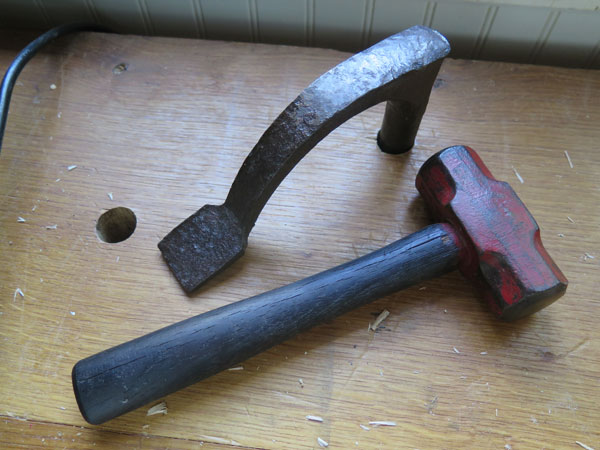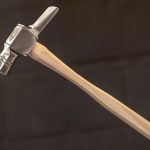We may receive a commission when you use our affiliate links. However, this does not impact our recommendations.
While I was at David Savage’s workshop I was delighted and surprised to see he used a “lump hammer” for assembling casework.
David brought the hammer to my workbench when he helped me knock together my dovetailed tool chest carcase for a class. And when he saw me smile hugely at the lump hammer (instead of recoiling in horror, which is what I think he was expecting), he told me something I didn’t know.
The lump hammer was one of Alan Peters’s favorite tools, as well.
I’ve carried one of these heavy hammers or one with wood faces (which I call “Mongo”) to classes where beatings were required, usually classes in tool chests or workbenches. Lump hammers look like they would destroy a carcase, but quite the opposite is true. They are gentle giants.
David and I are not alone. Richard Maguire, the English Woodworker, has written about his love affair with “Lumpy” on his blog here. Same with James Watriss. Now before you go looking for a “lump hammer,” read on.
Here in North America, it’s called a sledge, blacksmith or engineer’s double-face hammer. But none of those names does the tool justice quite like “lump hammer.”
I like one with a head that weighs between 2 lbs. and 2-1/2 lbs. (in metric land, look for a 1,000-gram head) with the tool’s total length about 10-1/2”. You might have to cut down the handle; this will improve its balance and finesse.
And here’s the good news: These sledgehammers are incredibly plentiful and cheap. Check out what’s on eBay today here.
I have an old Japanese one, and I recently gave it the “Seth Gould” treatment – charring the handle with a torch. You can read more on this technique in the April 2015 issue of Popular Woodworking Magazine.
Next time you see one of these tools at a flea market or used tool sale, pick it up and see how it feels in your hands. You just might just want to take one home.
— Christopher Schwarz
Here are some supplies and tools we find essential in our everyday work around the shop. We may receive a commission from sales referred by our links; however, we have carefully selected these products for their usefulness and quality.










It’s a bit much to be mentioned side by side with someone like Richard… I’m humbled.
Thanks, Chris
I am having trouble understanding the gentle giants part of this. How are they employed without damaging the work? Just something as simple as wooden pads, or am I missing something else?
Just want to point out that Richard Maguire from the English Woodworker blog has evolved and found an even better hammer – the one that Paul Sellers have been recommending for years, the Thor/Thorex 712 hammer.
I got a very nice Lump hammer out of the old Wheeling Wv. LaBell Cut Nail Factory not to mention a very large amount of Stainless cut nails. I think that Labelle is the only ones to have made stainless Cuts. They were made for decks and docks but I bet they would look nice for other projects..
Chris –
Why would you use such as these beast on wood when a non-marring shot & oil-filled mallet would do the same with less of a chance of damaging a surface?
I just started using one of these to assemble my French style bench. It now lives under that bench for those moment when it is needed.
I have what could be called a small lumpy. Found it years ago at a flea market and was smitten. It is a slender girl meaning it is more elongated than most sledges, weighs in just under two pounds and already has a shorter than normal handle. It is never far away from my hand. I also have my father’s three pound cross peen which will put a serious beat-down on anything needing one. It stands ready like a harem guard for the time it’s special qualities are called for.
I’ve had mine since 1975. I found the head lying on the side of the road on my way to work. I stopped and picked it up and took it home and cleaned the rust and dirt off it and put a new handle on it. I’ve been using it ever since for everything from splitting logs to banging together stubborn joints. I always called it my single jack but now I know it’s real name. Thanks.